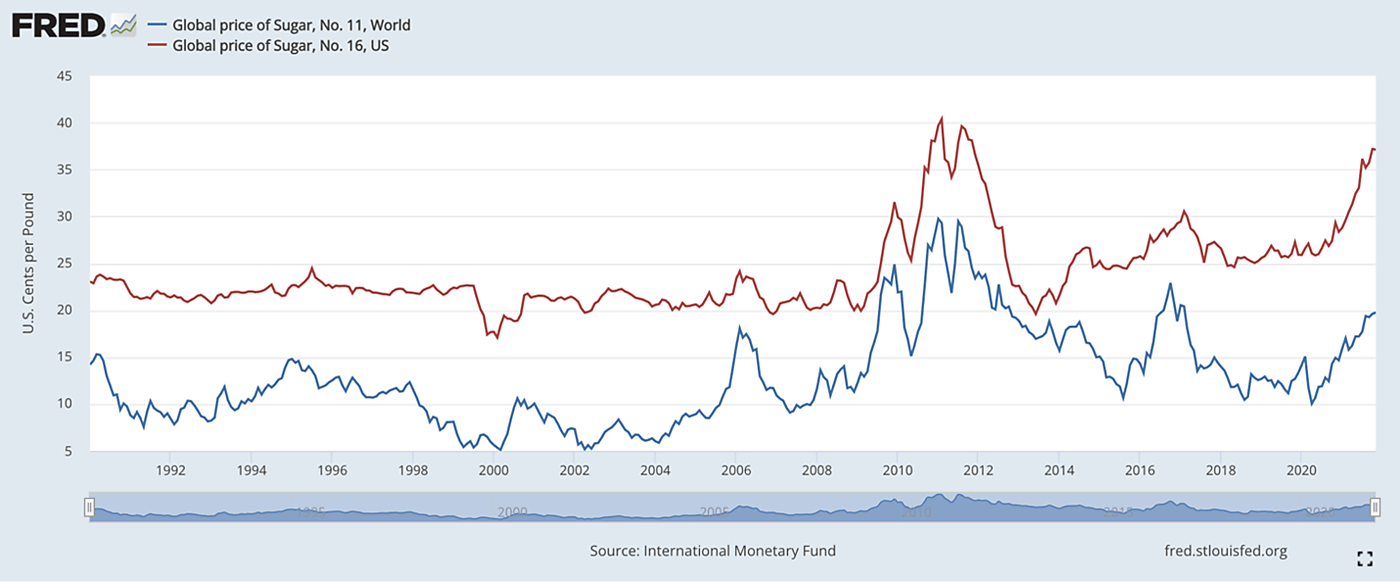With imports of Russian oil (as well as coal and natural gas) now banned, the country’s refineries must decide on alternative sources. The good news is that there are U.S. grades of crude oil well-suited for refineries on the East and West Coasts. The bad news is that the protectionist Jones Act stands in the way of getting this oil from where it is produced in the United States to other parts of the country where it is needed.
Passed in 1920, the Jones Act restricts the domestic waterborne transportation of goods—including energy products—to vessels that are U.S.-flagged and built as well as mostly U.S.-crewed and owned. Meeting these requirements isn’t cheap. A U.S.-built tanker is estimated to cost nearly four times more than one built overseas ($150 million versus $40 million) while operating costs are also significantly higher.
The inevitable result is expensive shipping rates that can make it cost-prohibitive to transport oil within the United States, thus tipping the scales in favor of imports.
Beyond costs, most Jones Act-compliant tankers are smaller medium range tankers typically used to transport refined products rather than crude oil (switching between the two is no easy task). Of the tankers in the Jones Act fleet, only 11 are larger Suezmax tankers designed for crude oil transport and these are almost exclusively used to ship crude from Alaska to West Coast refineries.
The seemingly obvious solution here would be for the Biden administration to waive the Jones Act to enable the cost-effective purchase of U.S. crude, but that’s less straightforward than it may seem. While the executive branch can waive the Jones Act via requests from the Secretary of Defense, that authority was pared back by the 2020 National Defense Authorization Act (NDAA). Previously allowed for reasons of national defense—a term sufficiently flexible that it allowed for Jones Act waivers following natural disasters such as Hurricane Maria—the 2020 NDAA (much to the delight of pro-Jones Act lobbyists) restricted waivers requested by the Secretary of Defense to those deemed “necessary in the interest of national defense to address an immediate adverse effect on military operations [emphasis added].”
Beyond requests from the Secretary of Defense, civilian entities can also seek Jones Act waivers via requests to the Department of Homeland Security. These, however, must be both deemed in the interest of national security and are subject to a canvassing of the existing Jones Act fleet to see if sufficient vessels already exist (two such waivers were issued last year during the Colonial Pipeline shutdown following requests from Valero and CITGO). This waiver route is unlikely to prove successful given that several Jones Act tankers are currently idle and available for use (albeit at rates higher than foreign alternatives).
That leaves waivers from the Secretary of Defense. Even if such a waiver could be justified on grounds related to military operations, language in the 2020 NDAA limits its duration to 10 days with extensions possible to a maximum of 45 days.
But tensions with Russia appear unlikely to be resolved in a matter of weeks. If policymakers want to tilt the playing field in favor of U.S. crude for the longer-term—more accurately, level the playing field by granting U.S. oil producers access to the same efficient shipping available to foreign oil producers that export to the United States—then more durable changes to the Jones Act will need to be made. Congress will have to act.
Already Rep. Ed Case (D‑Hawaii) has introduced legislation that would exempt energy products sent to Hawaii from the Jones Act so long as restrictions on Russian energy imports remain in place. That’s a good starting point. Providing a similar exemption to Puerto Rico would be another logical step given its own usage of Russian fuel imports. And a total exemption for domestic energy transport, ideally on a permanent basis, would be better still.
U.S. usage of Russian energy serves as a fresh reminder of the oft-overlooked harms inflicted by the Jones Act and the myriad ways it undermines both the country’s prosperity and national security. Let’s hope this sets the stage for a much-needed and long-overdue examination of this protectionist relic and the glaring failure of U.S. maritime policy.


